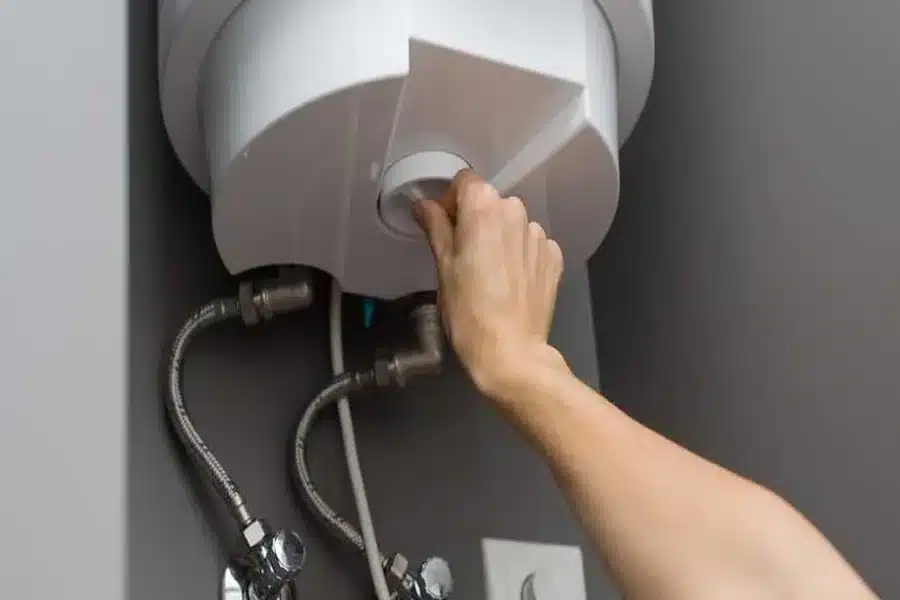Keeping Tankless Water HeatersMany Canadians deal with hard water, which causes mineral buildup and clogs up their tankless water heaters and other fittings. The limescale buildup in these minerals can block pipes and place stress on your heating systems. Proper servicing and draining of your tankless water heater help it stay at peak performance for a long time. Here are straightforward methods for maintaining your tankless water heater and ways to clean your faucets from limescale without needing to take them apart. It looks at how repairing and servicing boilers ensures that hot water can be supplied on time.
Professional assistance is the most reliable choice if you’re struggling with limescale. With years of service in Canada, Superior Plumbing & Heating is an expert at tankless water heater maintenance, boiler repair and plumber Newmarket Ontario. Their team carefully deals with mineral buildup so homeowners can use systems without problems
Why Flushing the System Is Key
Tankless water heaters provide instant hot water, but mineral deposits can build up inside, reducing flow and efficiency. Flushing clears out calcium and magnesium, preventing damage and maintaining performance. Consistent boiler servicing helps units last longer, while a boiler repair in Hamilton often starts with flushing to fix issues like spotty water temperatures.
To flush the system, turn off the power or gas to stay safe. Shut the water inlet and outlet valves, then hook a hose to the drain valve at the bottom of the unit, leading it to a bucket or drain. If the unit has purge valves, open them to let water flow. Run a mix of white vinegar and water through the system using a small pump for about 40 minutes to break down the limescale. Finish by flushing with clean water to keep the heater’s insides clear and working well.
Clearing Limescale from Faucets Without Disassembly
Faucets in hard-water areas often get clogged with limescale, cutting down water pressure. A simple vinegar-based method can fix this without taking the faucet apart. Here’s how it’s done:
- Shut Off Water: Close the faucet’s water valve to avoid mess.
- Mix Vinegar Solution: Fill a plastic bag with half vinegar and half water—enough to cover the faucet’s spout.
- Soak the Spout: Tie the bag over the faucet with a rubber band, ensuring the spout is submerged. Let it sit for 1–2 hours to loosen the deposits.
- Brush and Rinse: Remove the bag and scrub gently with a soft brush to remove leftover buildup. Turn on the water to clear debris.
- Wipe and Check: Clean the faucet with a cloth for a tidy finish and test the flow to confirm it’s improved.
This trick works for showerheads and aerators, too. If the limescale doesn’t budge, a boiler repair might be needed to check for deeper issues in the water system.
Routine Care to Avoid Problems
Keeping mineral deposits in check takes regular effort. Flush the water heater every 6–12 months, depending on the difficulty of the local water. A testing kit from a hardware store can show if a water softener is worth considering. A quick vinegar soak every few months stops buildup for faucets before it starts. Listen for odd noises or check for leaks, which can hint at the need for a boiler repair Hamilton.
Preventive Strategies for Hard Water Challenges
Hard water in Canadian homes can seriously damage water heaters. In addition to routine flushing, placing a scale inhibitor at the water inlet can slow down scaling and ease the work of the heater. Because these devices work by disturbing the bonding process, they help stop mineral buildup in your pipes and fixtures. Proper maintenance includes visiting the heater’s filter screen monthly to prevent clogs so your energy bill doesn’t increase. When the hardness in your water goes above 10 grains per gallon, a whole-house water softener can greatly reduce your upkeep duties. People who own homes should look at their faucet aerators every few months to prevent disruptions from small mineral deposits. When you mix these procedures with routine heater maintenance, efficiency is maintained for a long period, and system breakdowns are reduced.
Troubleshooting Common Heater and Faucet Issues
If your heating water system or faucets don’t function well, finding the root of the problem can help save you both time and money. Should water pressure be low even after cleaning, look for sediment built up in the heater’s inlet filter, usually seen in places with a lot of hard water. Sometimes, it’s enough to rinse with vinegar, though if the problem returns constantly, tendered scaling might be the problem, and a plumber should be contacted. Uneven temperatures often happen because of mineral buildup on the heat exchanger, which can be cleared by thoroughly unblocking. If soaking in vinegar doesn’t work, the shut-off valve may be only partially unblocked, causing faucets not to work properly. Try it by examining the flow at places where water is accessed throughout the building.
When to Call in Professionals
Simple maintenance can handle small issues, but problems like weak water pressure or inconsistent heating often need expert attention. Superior Plumbing & Heating specializes in tankless water heater maintenance Hamilton and boiler servicing, quickly sorting out complex issues. Their expertise keeps systems running reliably, saving time and hassle.
By following these steps, homeowners can ensure their water heaters and faucets stay in top shape. Regular upkeep prevents unexpected breakdowns and keeps hot water flowing consistently.




